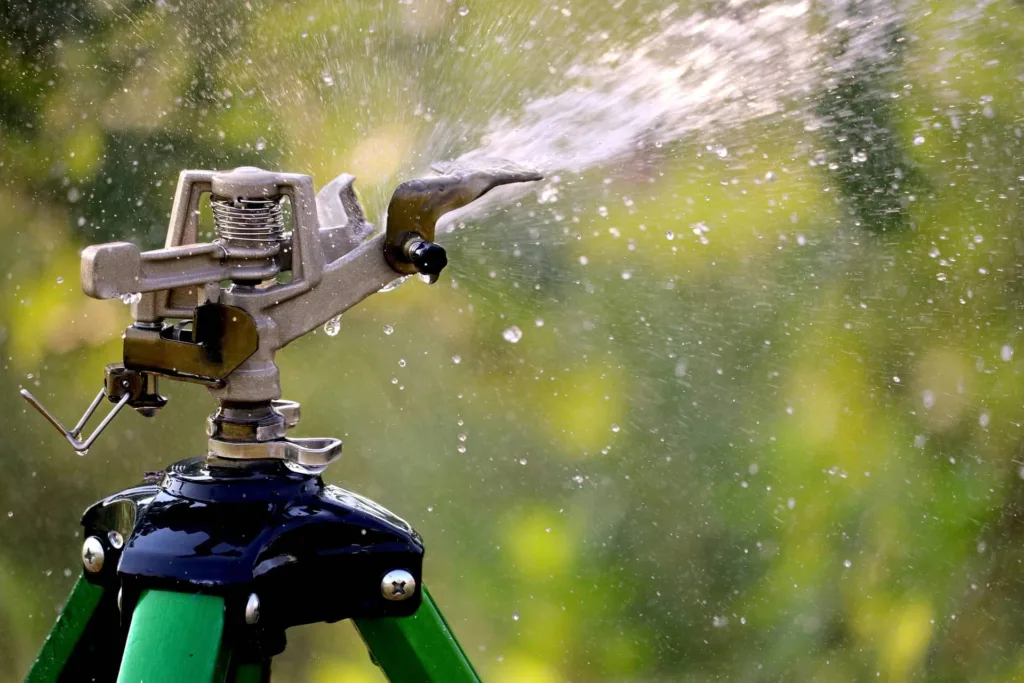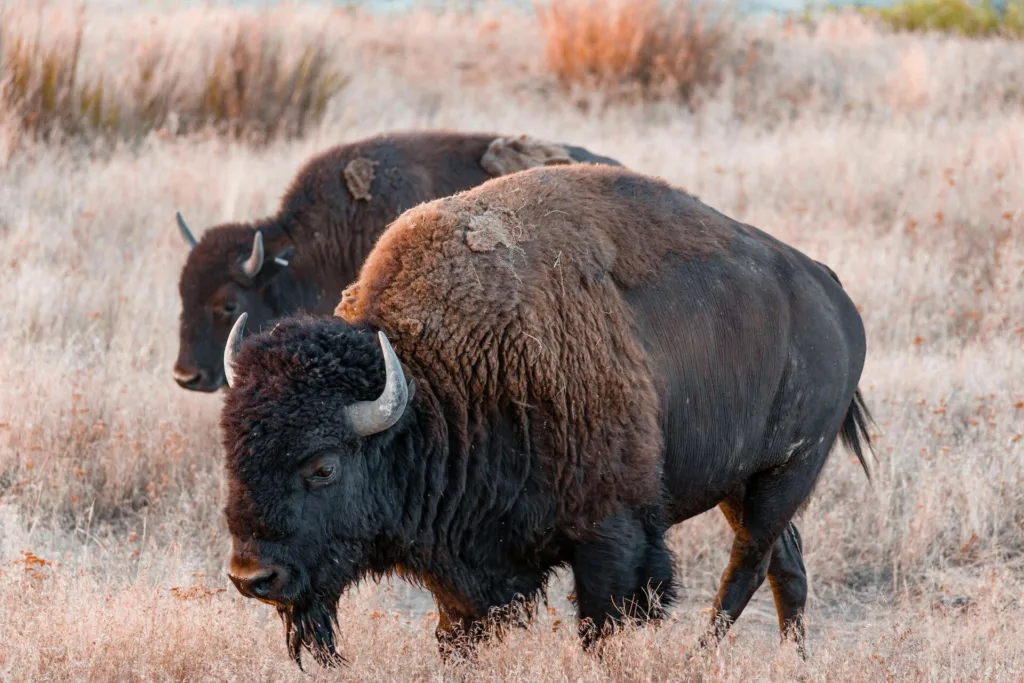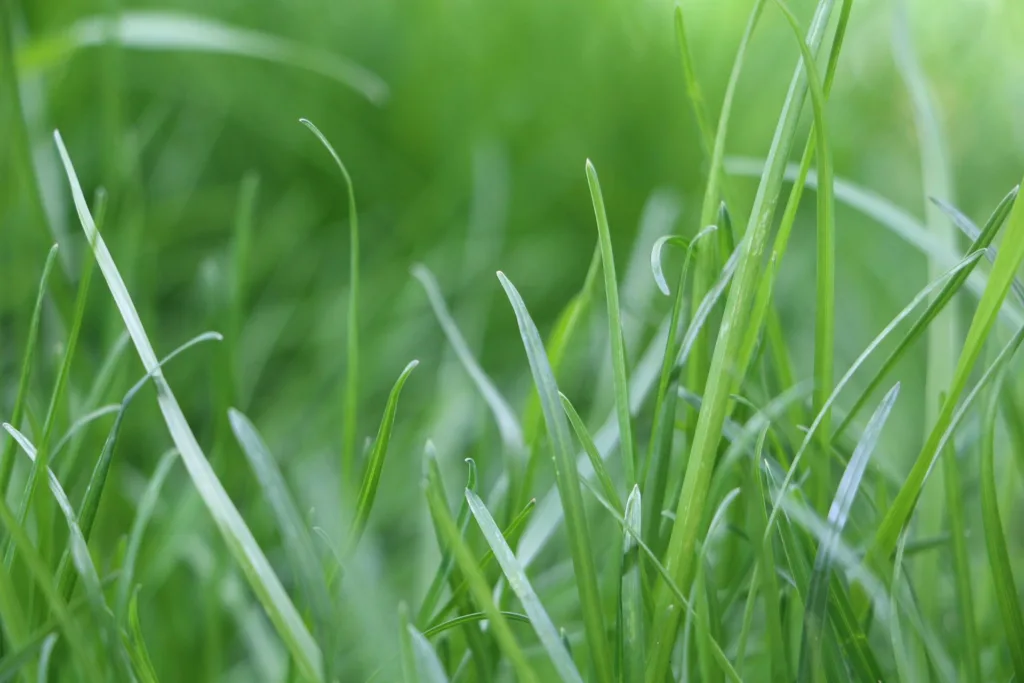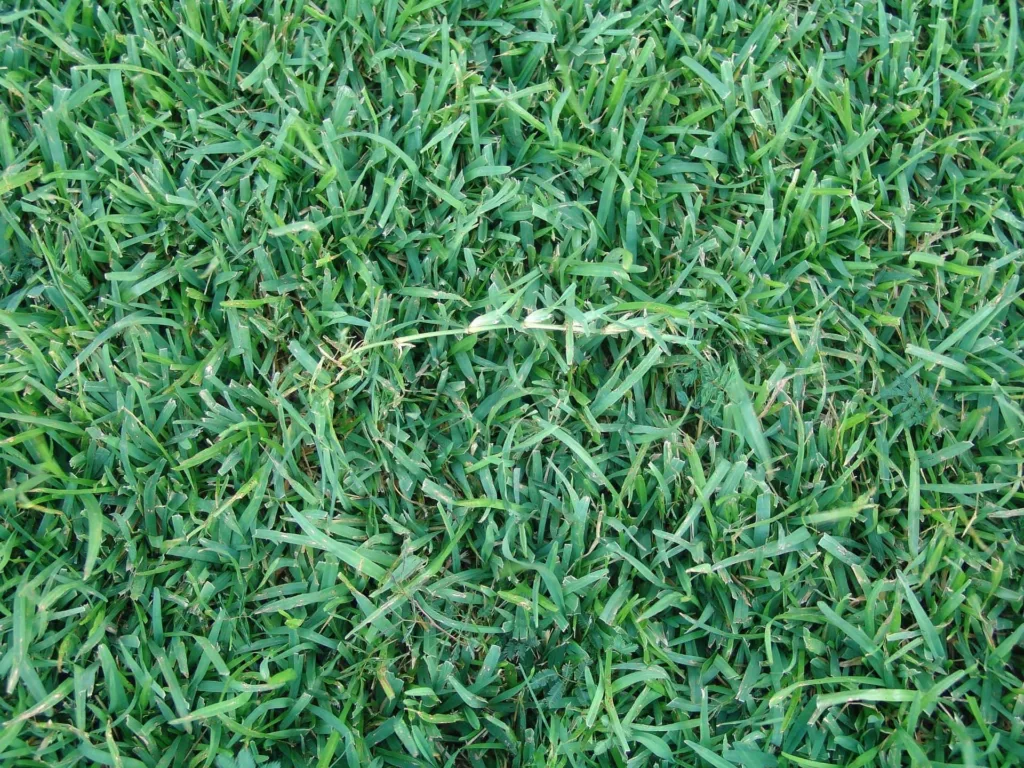Buffalo grass, a robust yet gentle giant in the realm of turf, offers an oasis of low-maintenance greenery perfect for sustainable landscapes. Whether you’re looking to bask in your backyard’s serene beauty or you’re a hands-on DIY’er striving for that lush, eco-friendly lawn, understanding how to cultivate, care for, and cherish buffalo grass can make all the difference. Ready to deepen your lawn care prowess? Let’s dive in!
Introduction
Let’s kick things off with the basics: What exactly is buffalo grass? Officially known as Bouteloua dactyloides, this grass isn’t your garden-variety turf. It’s a native prairie grass with a rustic charm, favored primarily for its hardiness and ease of care. Originating from the Great Plains of North America, buffalo grass has been a go-to choice for those looking for a sustainable, drought-resistant lawn option.
Why is it becoming a popular choice, you ask? For starters, it boasts a natural resilience that makes it a dream for the environmentally conscious gardener. It thrives in lean soils where other grasses might falter, needs minimal watering, and can handle a fair bit of neglect without turning into a backyard eyesore.
If you’re nudging towards a greener, low-maintenance lawn that still looks inviting, buffalo grass could be your new best friend. Let’s get into the details of why and how to make the most of this rugged grass variety.
The Fundamentals of Buffalo Grass Lore: Origins and Characteristics
Originating from the great prairies of the United States, buffalo grass (Bouteloua dactyloides) is a hardy perennial that thrives under a wide range of conditions but shines in environments where many other turfgrasses succumb to heat and drought. This tough nature makes buffalo grass a prime candidate for sustainable landscaping across many parts of the US, particularly the Great Plains.
What sets buffalo grass apart is its classification as a warm-season grass. This means it enters its prime growth during the warm months of late spring to early fall. It’s during this period that buffalo grass really spreads its roots and shows off its verdant vigor. Come winter, it naturally goes dormant, turning a shade of tan that some homeowners find equally attractive for its natural, rustic look.
Thanks to its deep root system and growth pattern, buffalo grass is naturally attuned to environments that experience extremes in temperature and moisture. This resilience not only cuts down on the need for supplemental watering but also makes buffalo grass a low-fuss option for those looking to cultivate a lawn that pretty much looks after itself while helping to conserve water resources. Its ability to thrive on minimal care aligns perfectly with today’s push towards more sustainable living practices.
Advantages of Choosing Buffalo Grass
If you’re weighing the options for an easy-care lawn that’s tough as nails but soft underfoot, buffalo grass should be front and center on your list. Here’s the scoop on why it’s a crowd-favorite, especially for folks looking to dial down the fuss and up the green in their gardens.
Drought-Tolerance: First up, buffalo grass is like the camel of turfgrasses. This stuff thrives on less water, making it a champ in areas where water conservation is key. Unlike many other grasses that start to throw in the towel under dry spells, buffalo grass keeps its cool, staying green with minimal watering. This makes it not only environmentally friendly but also easier on your water bill.
Native Sustainability: As a native prairie grass, buffalo grass is already well-adapted to many regions across North America. This adaptation gives it a leg up in the sustainability department—it’s accustomed to local pests, diseases, and weather patterns. So, instead of fighting against nature, you’re working with it. This means less fuss with chemicals and treatments, which is always a win for the planet.
Low Maintenance Needs: Let’s talk upkeep. Buffalo grass isn’t a diva. It doesn’t demand the high nutrient inputs some other grasses do. Its slow growth habit means less mowing, and its generally robust nature requires less fussing over with fertilizers and pest controls. This laid-back aspect extends to its care, which, if you’re anything like me and prefer enjoying the yard over maintaining it, is a huge plus.
Comparison with Bermuda Grass: When stacked against Bermuda grass, another popular choice, buffalo grass holds its own with distinct advantages. While Bermuda grass may offer a slightly more carpet-like lushness, it also needs more water and a higher level of maintenance. In contrast, buffalo grass brings a similarly attractive green vista but with fewer demands, making it ideal for those in drier climates or anyone looking to reduce their lawn care chores.
So, whether your motivation is reducing your environmental footprint, cutting down chores, or simply cultivating a lawn that can weather the ups and downs of climate with less intervention, buffalo grass is an option worth considering. It’s all about getting the lush life without the high stakes, and isn’t that something we could all use a bit more of?

Buffalo Grass Care Guide: Tips and Techniques
Caring for buffalo grass isn’t just about keeping your lawn alive; it’s about maximizing its natural resilience and beauty with minimal fuss. This section will walk you through the essential steps of maintaining a healthy buffalo grass lawn, from watering practices to the right mowing techniques.
1. Watering Smartly: Buffalo grass thrives on efficiency. It doesn’t drink much, thanks to its drought-tolerant nature. Typically, an inch of water per week (including rainfall) is sufficient. But here’s the kicker – it prefers infrequent and deep watering over a frequent sprinkle. This encourages deeper root growth, enhancing its drought tolerance. During hot, dry spells, keep an eye on your lawn. If it starts to show blue-gray tones or the blades curl, that’s buffalo grass’s way of saying “I’m thirsty.”
2. Fertilization – Less is More: If you’re used to fertilizing often, you can relax with buffalo grass. It requires minimal fertilizer. In fact, over-fertilizing can harm this grass type by promoting disease vulnerability and unnecessary growth. One light application of a nitrogen-based fertilizer in early summer should do the trick. Make sure you use no more than one pound of nitrogen per 1,000 square feet annually.
3. Ideal Mowing Height: Buffalo grass needs a different mowing approach. Keep your mower blades set high, as the ideal mowing height is about 2.5 to 3 inches. This height helps shade the soil, reducing water evaporation and suppressing weed growth. It also promotes healthier, thicker growth. Regular mowing is not needed; just trim it down when it looks a bit shaggy, typically every 3 to 4 weeks.
4. Yearly Maintenance Check: Aerate your lawn annually during the spring to improve moisture and nutrient absorption. Also, a light dethatching every few years helps prevent soil compaction and buildup of lawn thatch that can smother your grass.
Implementing these simple yet effective care techniques will keep your buffalo grass lawn looking pristine while honoring its low-maintenance nature. With just a little attention, your lawn will not only survive but thrive, showcasing its lush, green splendor with minimal impact on your time and resources.
How to Establish a Buffalo Grass Lawn: Seeding and Beyond
Establishing a buffalo grass lawn from scratch isn’t just about tossing some seeds on the soil and hoping for the best. It requires a bit of prep, the right timing, and an understanding of what makes these grasses tick. Let’s break it down into actionable steps, so you can start your journey towards a resilient, low-maintenance lawn that’s both pleasing to the eye and good for the environment.
Preparing the Ground
Before anything else, preparation is key. Start with a clean slate by removing any existing grass, weeds, or debris from the area. A sod cutter can be handy here if you’re dealing with existing vegetation. Next, test your soil to understand its condition – particularly its pH and nutrient levels. Buffalo grass thrives in well-drained, loamy soils, but it’s pretty adaptable. Still, make sure your soil isn’t too compact; aerating could be a necessary step here to help the roots breathe and grow.
Sowing the Seeds
Now, onto sowing. Buffalo grass seeds are best planted when soil temperatures consistently exceed 60°F, typically in late spring or early summer. This timing helps ensure that your seeds have the best conditions for germination and growth.
Spread the seeds evenly across the prepared soil, then lightly rake them in to ensure good soil contact. A seeder can help with even distribution, or you can do it manually if you’re working with a smaller area.
Coverage is crucial – aim for about 2-3 pounds of seeds per 1,000 square feet. Once sown, a light roll with a roller will help ensure the seeds stay in place, particularly important in windy or slopey regions.
Initial Care
After planting, the focus shifts to keeping the soil consistently moist but not waterlogged. Gentle, frequent watering several times a day may be needed to maintain the ideal dampness until seeds have established. Cut back on watering as seeds begin to germinate and grass starts to show, transitioning into a more regular watering schedule based on the weather and soil moisture levels.
Keeping foot traffic and pet activity off the newly seeded area is crucial during the first few weeks to prevent disturbance and give the delicate sprouts a chance to strengthen.
Best Time to Plant Buffalo Grass
Choosing the right time to plant is pivotal. For most regions where buffalo grass is ideal, planting in late spring through early summer gives the lawn a fighting chance to establish before the cooler months. Be mindful of your local climate conditions and avoid periods of extreme weather that could hinder establishment.
By following these steps, your seed-to-lawn transformation will be well underway. Remember, patience is key. Buffalo grass may take a little longer to establish fully, but its resilience and low maintenance nature will pay off in spades!

Long-term Maintenance: Keeping Your Lawn Flourishing
To keep your buffalo grass lawn healthy over time, shift your strategy from mere upkeep to proactive stewardship. This section covers the essentials of long-term maintenance to ensure your buffalo grass not only survives but thrives.
Seasonal Care Variations
Buffalo grass needs seasonal adjustments in care. In spring, focus on strengthening the roots. Water deeply but infrequently to encourage drought resilience. Come summer, the growth peaks — trim occasionally but avoid cutting too short; about 2.5 to 3 inches is optimal to protect roots from scorching heat.
As autumn approaches, reduce watering as the grass begins to enter dormancy. During winter, mostly leave the grass alone to rest under the chilly blanket of the season.
Troubleshooting Common Issues
Weed Control: Buffalo grass is naturally competitive against weeds, but some intruders can still sneak through. Maintain a dense turf to minimize weed outbreaks. If you spot weeds, tackle them manually or use a selective herbicide intended for buffalo grass to avoid damage to your lawn.
Patchiness: Sparse areas can appear over time, especially in high-traffic sections of your lawn. Overcome this by overseeding in early spring to encourage lush growth. Ensure the seeds make good soil contact, which might mean lightly raking before sowing.
Pro Tips for Year-Round Vigor
- Aeration: Once a year, aerate your lawn to alleviate soil compaction. This allows air, water, and nutrients to penetrate deeper, which rejuvenates the grass.
- Adjust for Environment: Be mindful of your location’s specific conditions. Areas with extreme weather conditions might need adjusted watering and mowing schedules to align with local precipitation and temperature trends.
- Monitor and Adapt: Regularly check the health of your lawn. Look out for signs of stress such as discoloration or thinning. Early detection helps you adjust care tactics promptly to avoid bigger issues.
By following these guidelines, your buffalo grass lawn will remain a durable and inviting feature of your home’s landscape, providing a serene and lush exterior space throughout the changing seasons.
Choosing the Right Buffalo Grass for Your Lawn
Selecting the ideal type of buffalo grass is essential for adapting your lawn perfectly to both your local climate and personal lifestyle demands. This guide will navigate you through the various options to help you choose the most suitable buffalo grass variety for your garden.
Exploring Varieties of Buffalo Grass
Buffalo grass comes in several varieties, each with unique characteristics tailored for specific environments and uses. Below are some of the popular types:
- Prestige: Best for southern and southeastern regions, Prestige is known for its lush, green color and fine texture. It is ideal for homeowners looking for a dense, visually appealing lawn.
- Legacy: Suited for cooler climates, Legacy tolerates cold temperatures well. It grows slowly, reducing the need for frequent mowing, and maintains an attractive olive-green color.
- UC Verde: Created by the University of California, this variety excels in the hot, dry climates of the southwestern U.S. It requires minimal watering and sports a vibrant green hue that stands out.
Key Considerations for Selection
When selecting the right buffalo grass for your lawn, take into account these important factors:
Climate Adaptation
Ensure the chosen variety is well-suited to thrive in your specific regional climate, considering temperature and humidity levels. For instance:
- UC Verde is ideal for arid zones.
- Legacy is better for cooler northern locales.
Usage Demands
Reflect on how your lawn is used:
- Frequent foot traffic, such as from pets or children, necessitates a more resilient variety like Prestige.
Maintenance Commitment
While buffalo grass is generally low-maintenance, different types may require varying levels of care, especially regarding watering and fertilization. Consider how much effort you are willing to invest.
Making an Informed Choice
Taking the time to choose the right buffalo grass will not only yield an eco-friendly lawn solution but also enhance the beauty and durability of your outdoor space. Evaluate your local climate conditions, daily yard usage, and personal maintenance preferences. Armed with this knowledge, you’ll be well-equipped to pick the perfect buffalo grass variety for your garden.

Beyond the Basics: Enhancing Your Buffalo Grass Lawn
Buffalo grass is more than just a robust, low-maintenance turf choice. Its subtle hue and texture can serve as a beautiful canvas for a more extensive landscape design. To truly make your lawn pop while sticking to sustainable gardening practices, consider integrating native plants that complement the natural aesthetics and growth habits of buffalo grass.
Start by selecting native shrubs and flowering plants that thrive in the same conditions as buffalo grass. Look for species that require minimal additional watering, which will help maintain the environmental integrity of your lawn.
For example, adding wildflowers such as purple coneflower or black-eyed Susan can inject vibrant color into your landscape while fostering a habitat for local wildlife like bees and butterflies.
Pay attention to the layout. Group plants with similar water and sun requirements together to create a harmonious yet dynamic garden scene. Design pathways or stepping stones that weave through your buffalo grass, inviting visitors to explore your outdoor space more intimately.
Incorporating multi-functional elements such as low stone walls or benches made from natural materials can enhance your landscape’s visual appeal and usability without detracting from your sustainability goals. These elements can provide a rustic, earthy element alongside the softer texture of buffalo grass.
Don’t forget about the edge definition. Use natural edging materials like stone or untreated wood to delineate your buffalo grass lawn from other garden areas. This not only enhances visual interest but also helps to keep different areas of your garden distinct and organized.
Finally, consider visiting more of our grass types for further ideas and inspiration. We offer resources on other grass types and accompanying plant species that can harmonize beautifully with buffalo grass and elevate your lawn to the next dimension of landscape design.
With these tips and a bit of creativity, your buffalo grass lawn can become a cornerstone of a vibrant, eco-friendly garden that invites both admiration and relaxation.
Conclusion
There you have it—a straightforward scoop on buffalo grass, the low-key hero of sustainable lawns. Just to recap: Buffalo grass thrives with minimal fuss, loves the heat, and stays green while keeping your water bills blue. It’s tough against droughts but soft underfoot, making it a stellar choice if you’re after a lawn that doesn’t demand your attention every weekend.
Taking the plunge with buffalo grass means embracing a lawn that’s both eco-friendly and low-maintenance. From choosing the right seeds to mastering seasonal care, everything we’ve covered is about setting you up for success. Whether you’re converting a portion of your yard or going all-in with a complete buffalo grass transformation, remember that the small steps you take now pave the way to a lush, green future.
So, gear up, get planting, and watch as your lawn transforms into a resilient, sustainable retreat. The buffalo grass path is not just about having a great lawn—it’s about taking a stand for the environment. Dive in, enjoy the journey, and let your lawn be a testament to low-maintenance, high-reward living. Happy planting!
Additional Resources
Ready to turn your buffalo grass knowledge into a lush lawn that’s the envy of the neighborhood? Here’s where you can dig even deeper. For those of you itching to get more granular with your understanding, or perhaps troubleshoot specific issues, we’ve got you covered with some top-notch resources.
First up, check out the deep-dive buffalo grass guide from the Colorado State Extension. This resource is gold for anyone in a similar climate or looking to master the intricate care specific to buffalo grass. From detailed planting guidelines to pest management and more, this guide offers a comprehensive look at nurturing your buffalo grass to peak perfection.
For a broader perspective on native grasses and sustainable lawn options, don’t miss our in-depth articles on Backyard Nomads. Here, you can explore how buffalo grass compares to other turf alternatives, enriching your understanding of how best to integrate it into your overall landscape design.
Leveraging these resources will not only bolster your lawn care acumen but also empower you to make informed, eco-friendly decisions for your outdoor space. So, keep these links handy—you never know when you’ll need a quick peek to solve a pressing grassy conundrum!


